You’re in a windswept, dockside vehicle compound. There’s a gale blowing and it’s pouring with rain. You’re 10 feet from the ground, squeezing out of a brand-new Mercedes onto a narrow walkway. One wrong move and you’ll fall. People do.
Welcome to Mick Crump’s world. He’s a car transporter driver and says loading at a windswept docks is a nightmare. “You can be blown straight over the side,” he says. “But it’s not just docks. You get some drivers who arrive at a delivery only to find they’re missing a car because it fell off, or drivers who put something heavy like a Range Rover on the back and the whole rig starts swinging like a demolition ball.”
Last November, a transporter carrying 12 cars overturned on a roundabout in Skipton; in September, a car fell off a transporter on the M6; on the M60, in 2016, a transporter shed its load of supercars.
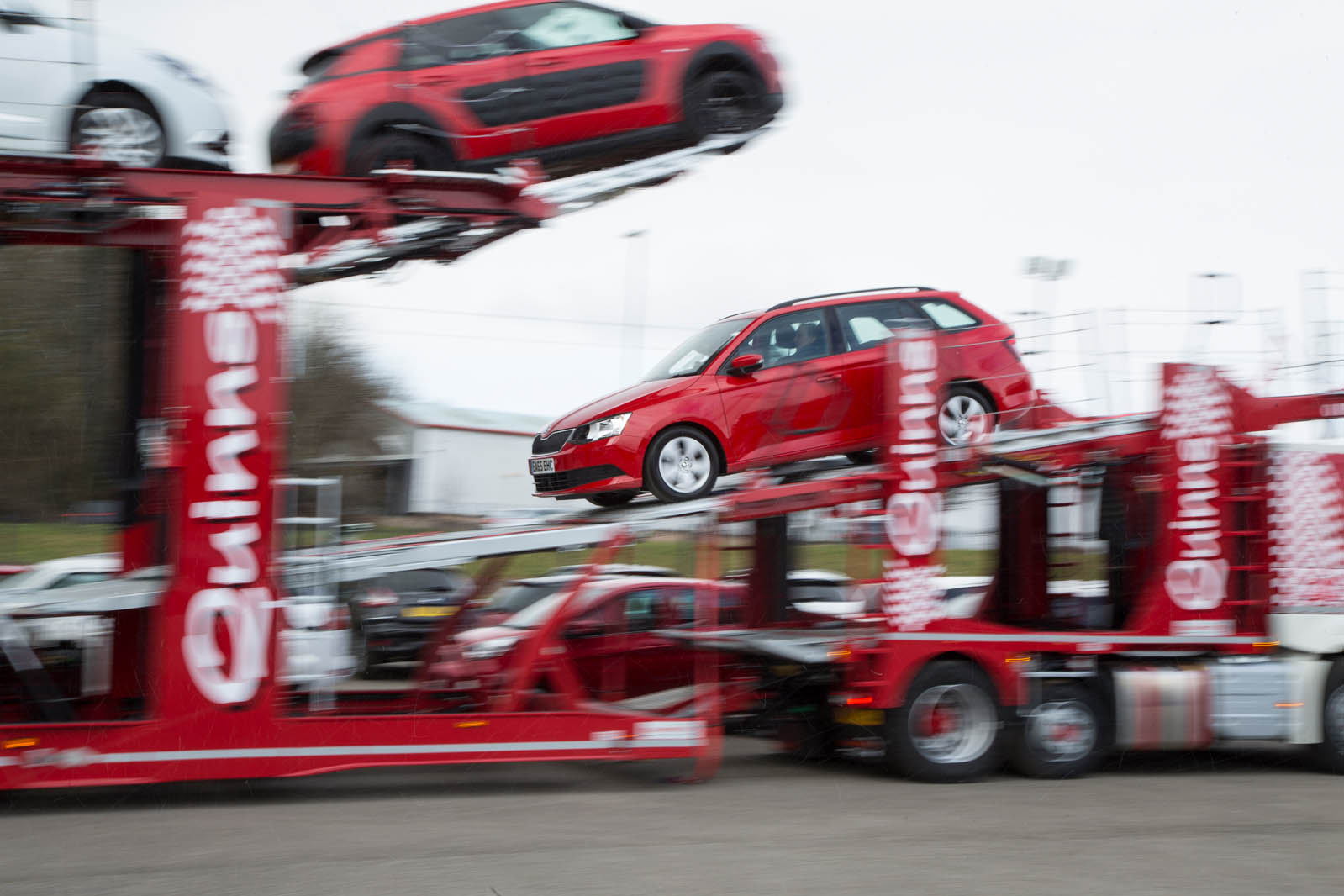
Clearly, the life of a transporter driver is not for the inexperienced – which is why my suggestion that I load Mick’s brand-new £250,000 12-car transporter is kicked into the long grass.
“Health and safety,” chorus the three sisters who own it, one of 50 transporters operated by the family firm, Quinns Car Transport, that Mick drives for. In other words: ‘You’ll mangle the cars, damage our new truck and break your neck.’
After tottering up the 18.75-metre rising deck of the transporter, an Odyssey built by Transporter Engineering and pulled by a Volvo FM450, I admit they have a point.
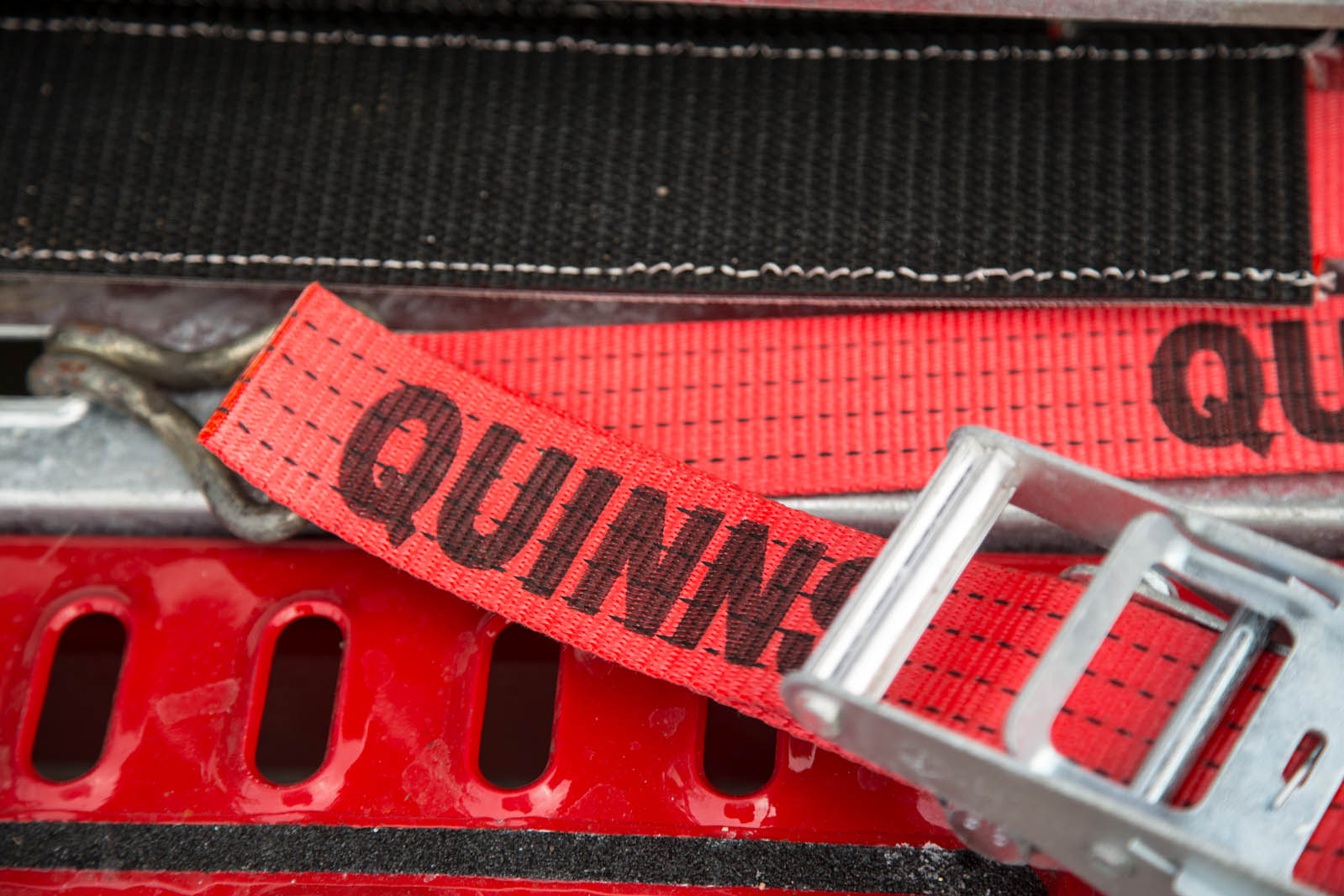
Mick makes loading a car look easy. I watch as he rises out of the car’s driving seat and leans out of the window, the better to check he’s tracking straight and at the right distance from the truck’s edges as he drives up the deck to the ‘peak ramp’ above the transporter cab.
At the summit and safely out of the car, he crouches down beside the wheels and secures them to the deck with wheel straps. Back on the ground, he surveys the rest of the load. “Judging which cars to put where is one of the hardest parts of the job,” he says. “It’s made more difficult because you must try to load them in ‘drop order’ so that you don’t have to take cars off to get to the one you’re delivering first.”
Fortunately, Quinns is blessed with a smart allocations team led by Laura Quinn. She sees all cars as shapes that must fit on the transporters like pieces in a jigsaw, and plans the drop order.
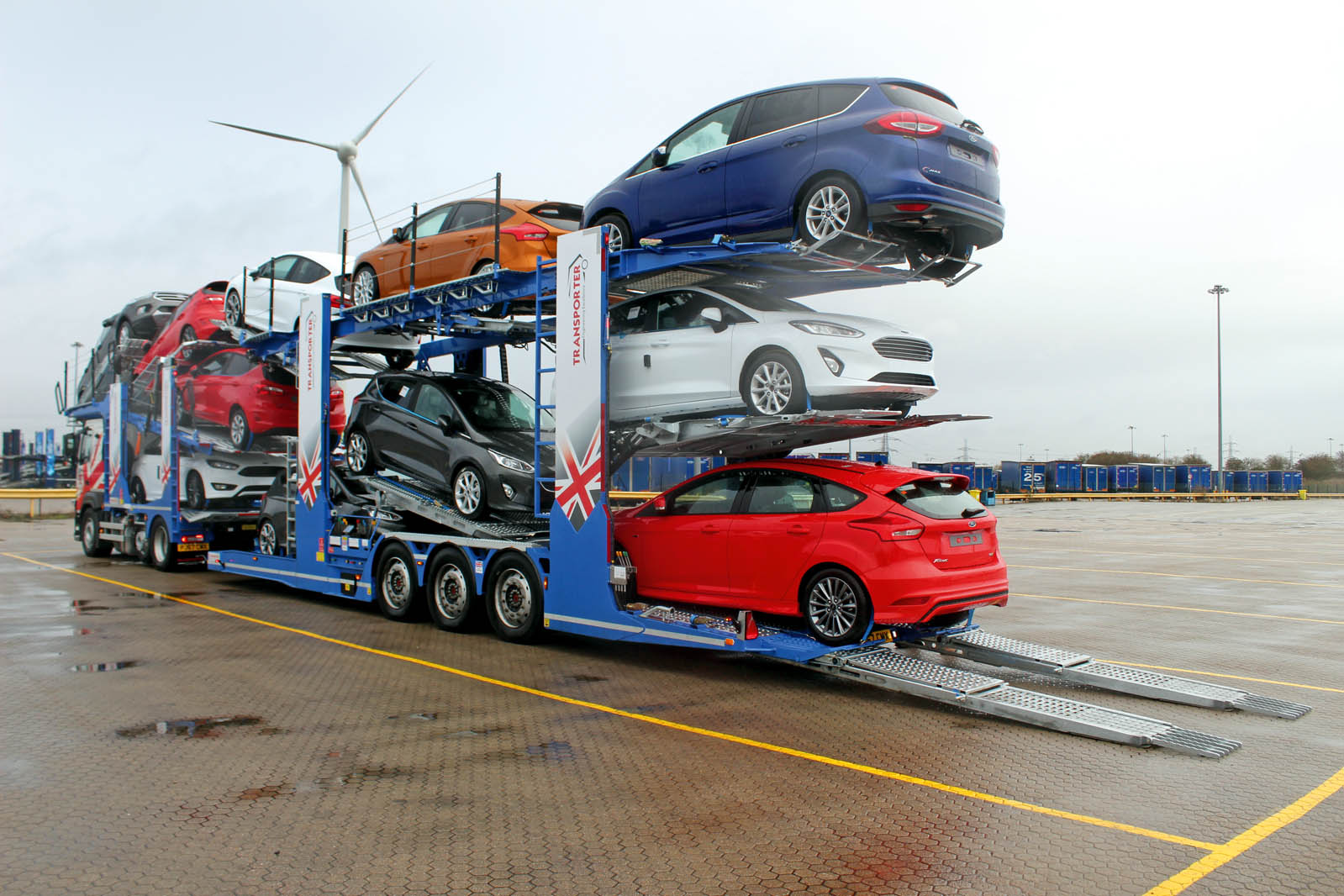
“It helps to know your cars,” she says. “So if a company says ‘I need to move 12 Fiat 500s’, I know to ask if they’re the hatch, the MPV or the SUV – or all three. A Juke has an awkwardly sloping profile, a Picanto is short but tall, an Audi A6 saloon is low but long. Cars are getting bigger. We could get 12 old-model Ford Fiestas on a truck; now we can only get 11 of the new ones.”
It also helps that the Quinn sisters know from experience what their drivers have to deal with.

Laura’s sister Abi was a Quinns truck mechanic for 10 years, Sam a transporter driver and Laura herself a driver’s mate tasked with loading and unloading the cars. The business was founded by their father, Tony, a former truck fitter, in 1983 after a cash-strapped customer crippled by the steel strike paid him in the form of a transporter. Today, he has 50 of the things moving 800 cars a day.
A transporter’s two decks are in fact a series of ‘ramps’, one for each car, that can be inclined, raised and lowered, and moved forwards and backwards via hydraulic control levers. This system ensures even the bulkiest vehicles can be accommodated since it allows them to be inched into place at extreme angles. It allows the transporter to be formed of a so-called ‘rigid short wheelbase’, which includes the cab, and an articulating trailer for awkward turns.
The trick, says Mick, is watching your ramp angles; making sure that as each ramp tilts, the car sitting on it doesn’t catch its bonnet on the underside of the ramp above it or that the ramp’s rear end doesn’t bash the bonnet of the car behind. You also have to think about what car to put over the articulation because, on some models, a steep camber can crack the windscreen as the trailer pivots.
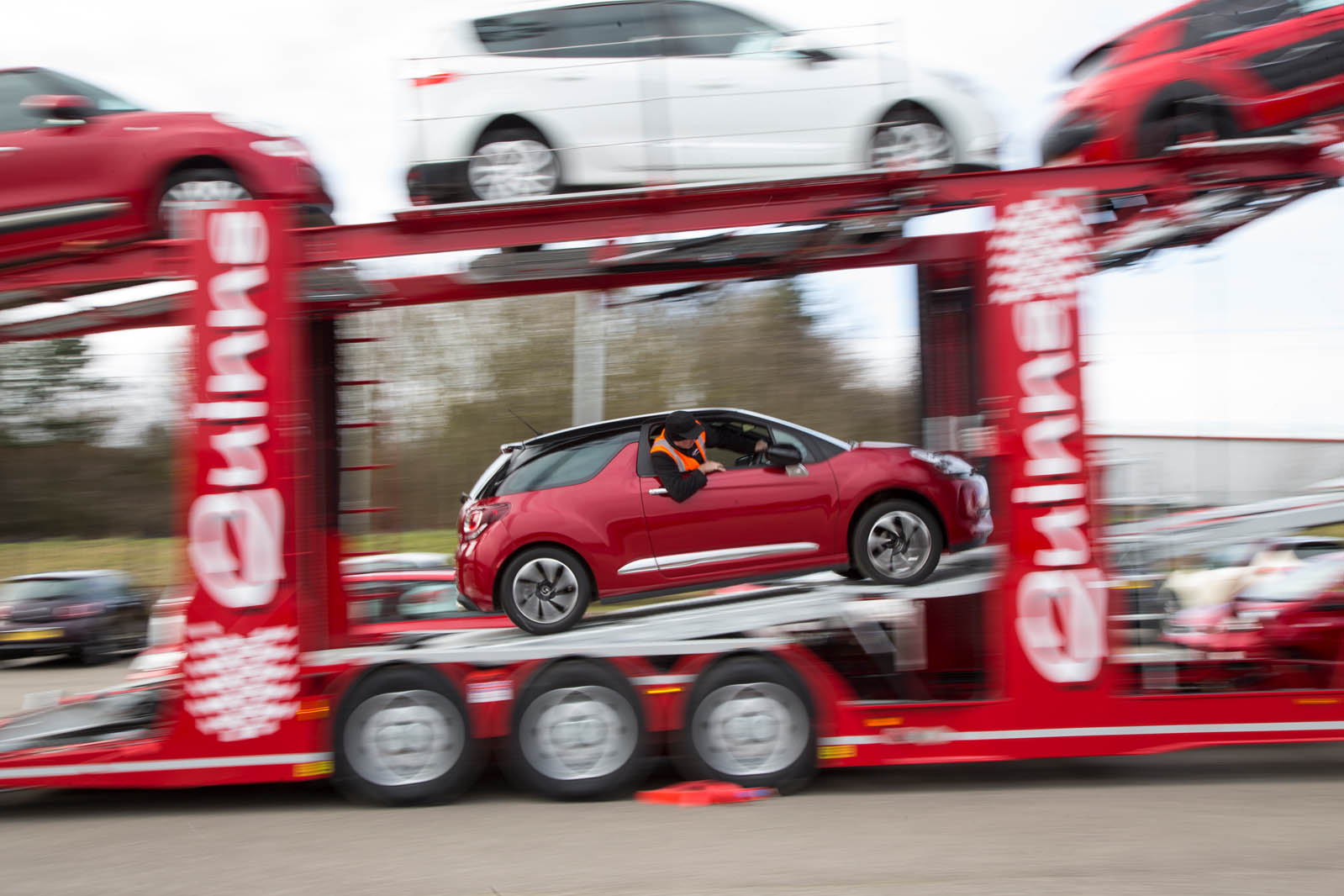
The ramps form the transporter’s two decks, which are raised and lowered hydraulically. To avoid them ‘sinking’ during the journey, they’re locked into place with pneumatically retractable pawls.
To check he’s not exceeding a safe height, as well as allowing room for vertical movement of the cars and truck, Mick walks the length of the transporter holding a tall, L-shaped measuring stick. It’s not only bridges he has to consider – council cutbacks mean roadside trees are no longer being trimmed, so car roofs are at risk of being scratched.
As I watch Mick drive the fully loaded Odyssey to its first drop, I’m thankful it’s him and not me at the wheel. I can’t load a dishwasher, never mind a 12-car transporter.
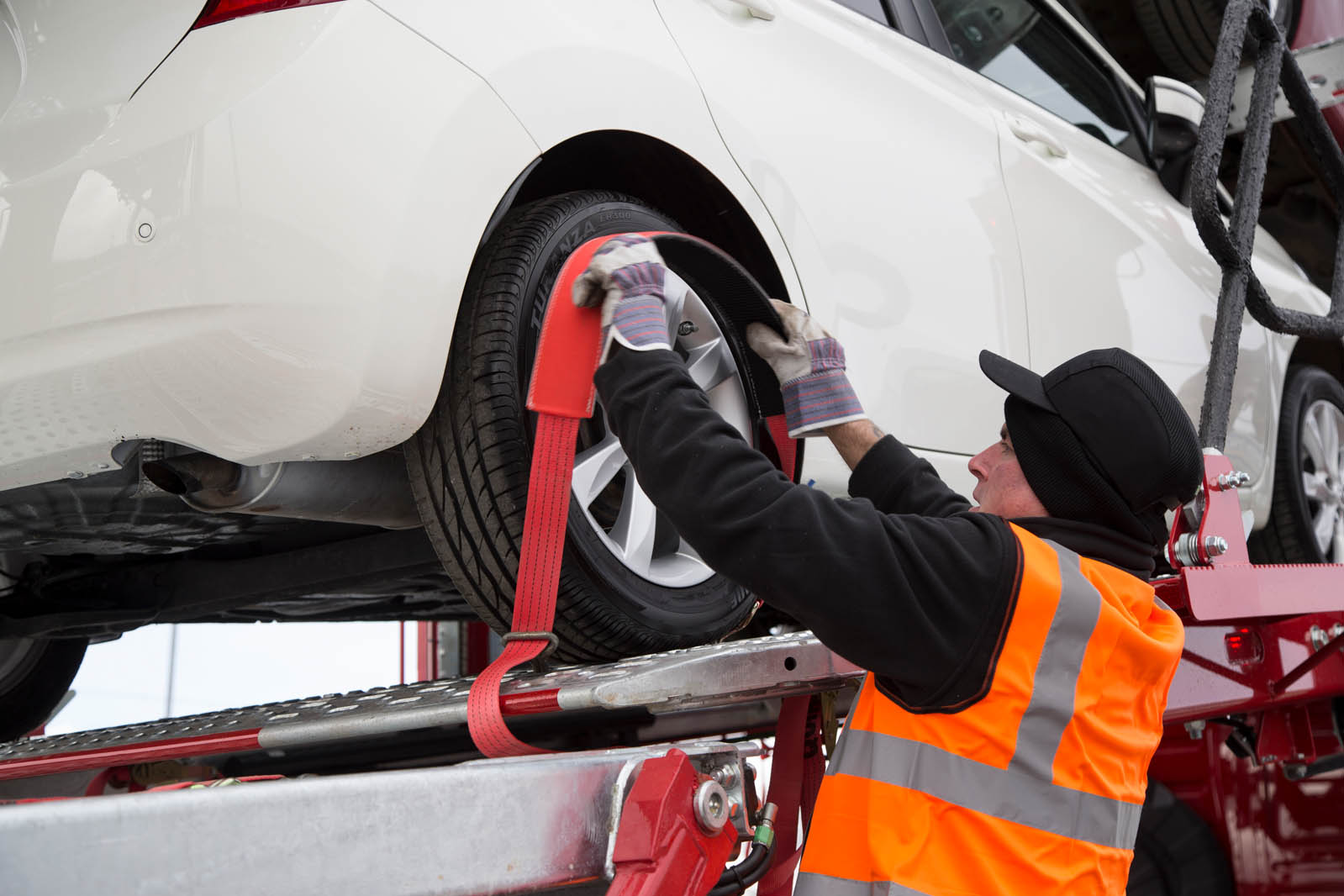
John Evans
How to load a car transporter in four (not particularly easy) steps
Transporter Engineering, the Essex-based firm that made Quinns’ Odyssey transporter, builds 300 vehicles a year. It runs regular loading trials with car manufacturers to test how the new models will fit on its transporters. At a loading test with Bentley recently, Mick was able to squeeze five Bentaygas and two stretched Mulsannes onto one.
Step 1: The top deck of the articulated trailer is lowered and loaded with three cars, and then raised.
Step 2: The lower deck of the articulated trailer passes under the raised top deck to meet the top of the rigid section attached to the cab. A car is reversed along its length and tilted over the cab. A second car is driven up to it and tilted at the same angle so that it is partially underneath it. A third car is stowed behind and partly under this car.
Step 3: The lower articulated deck now falls level with the lower rigid deck to allow the seventh car to be reversed up to the rear of the cab.
Step 4: The lower deck now separates to allow the rear trailer to articulate. The eighth car is reversed to the front of the articulated lower deck. The ninth car is reversed on and raised over the bonnet of the eighth car. The 10th car is reversed on and raised to allow the 11th car to be stowed under it at the end of the articulated trailer.

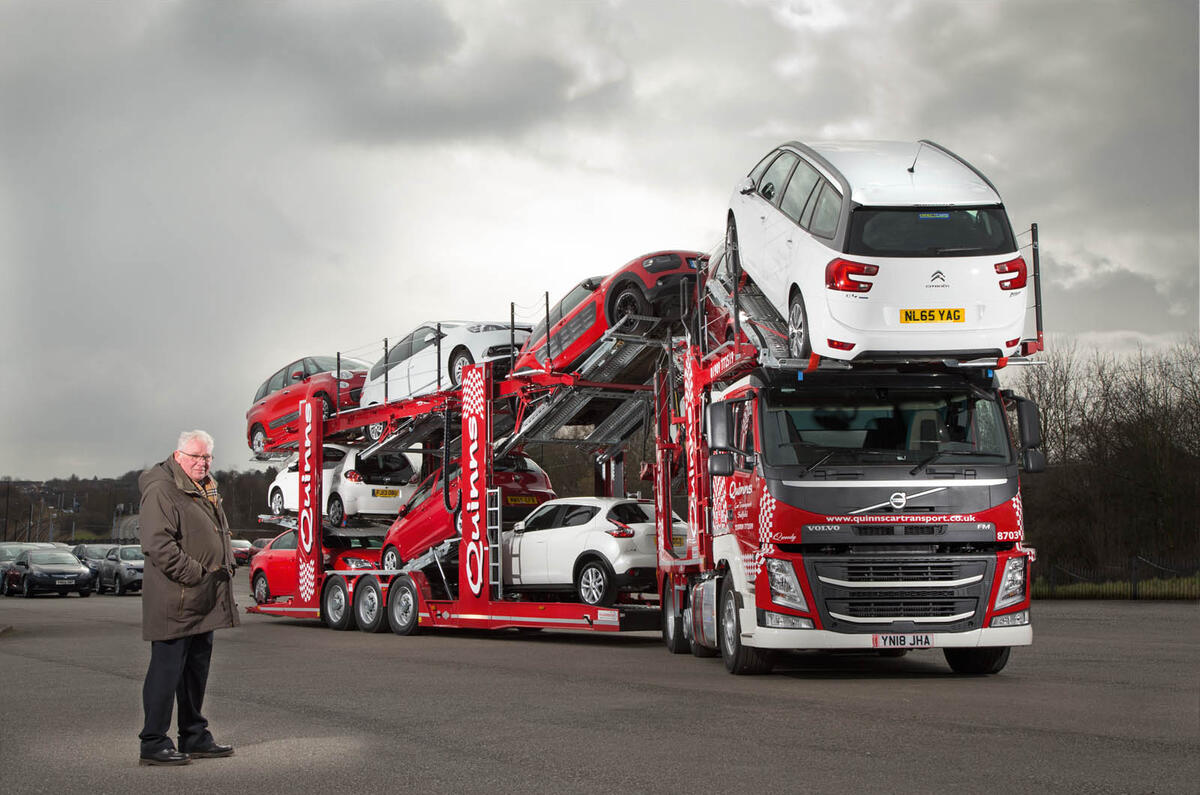

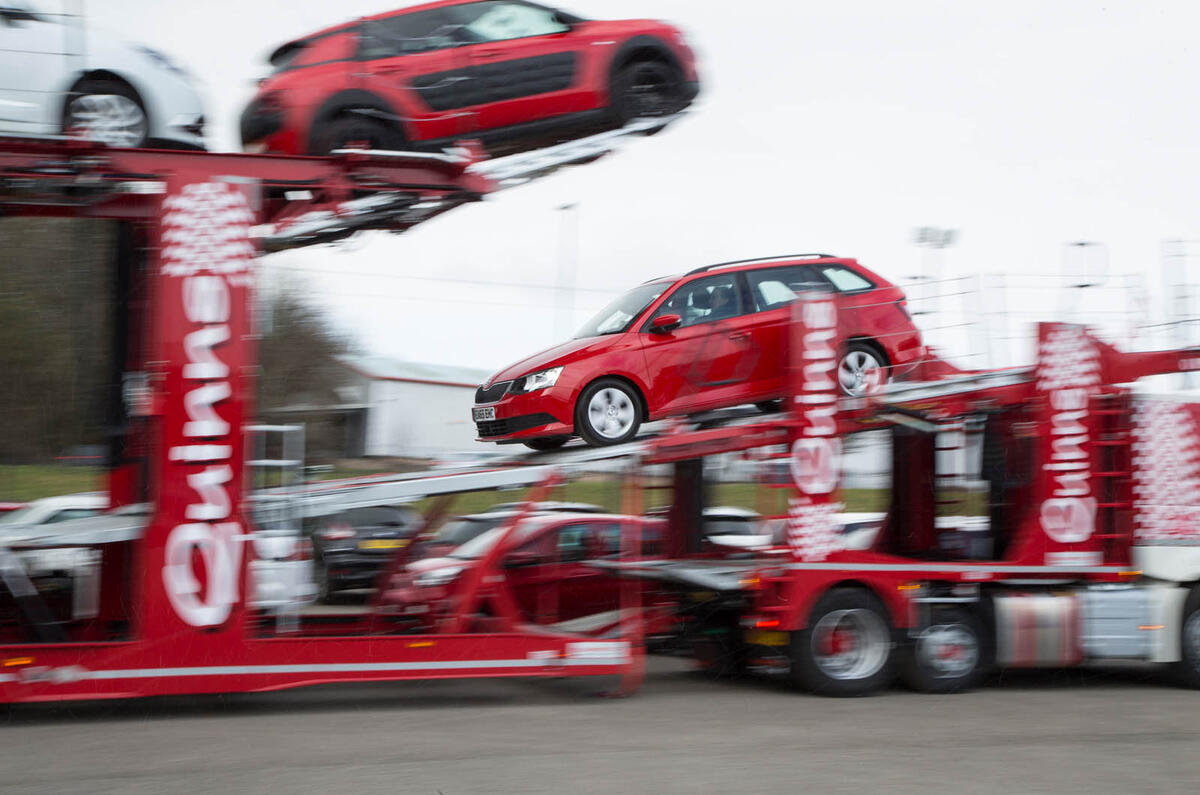

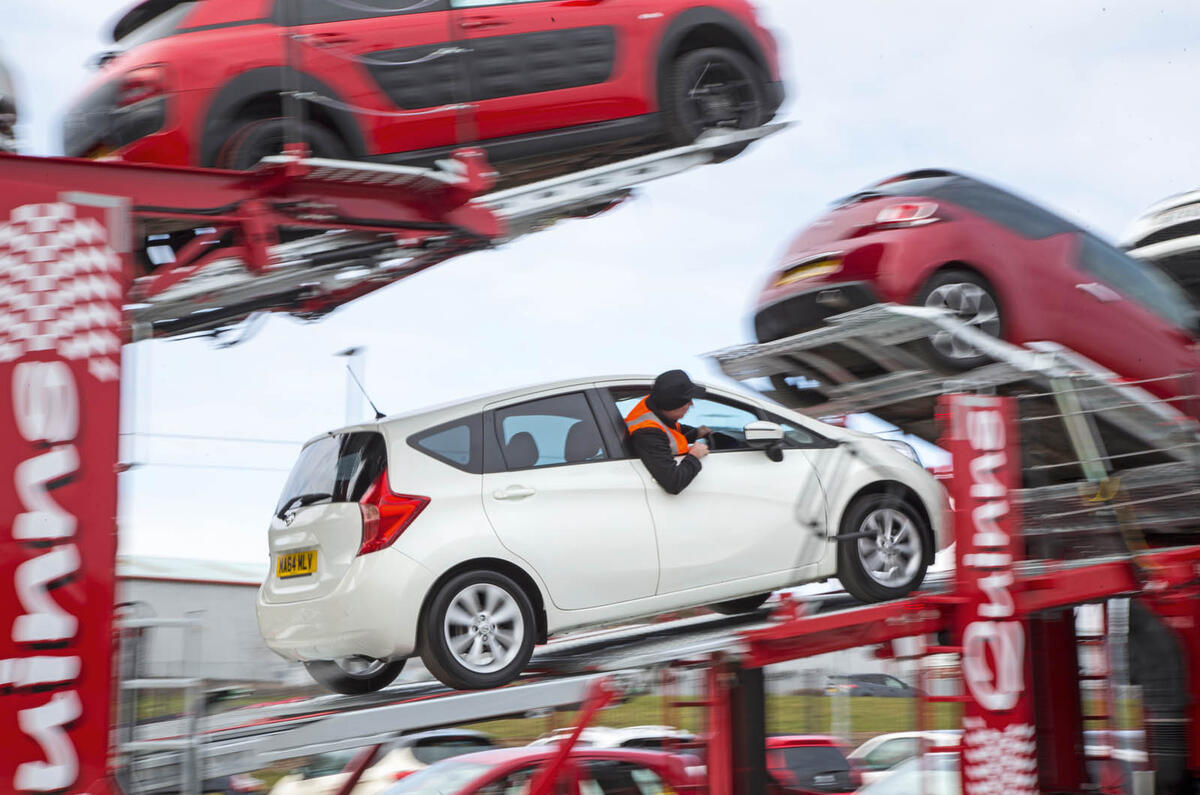
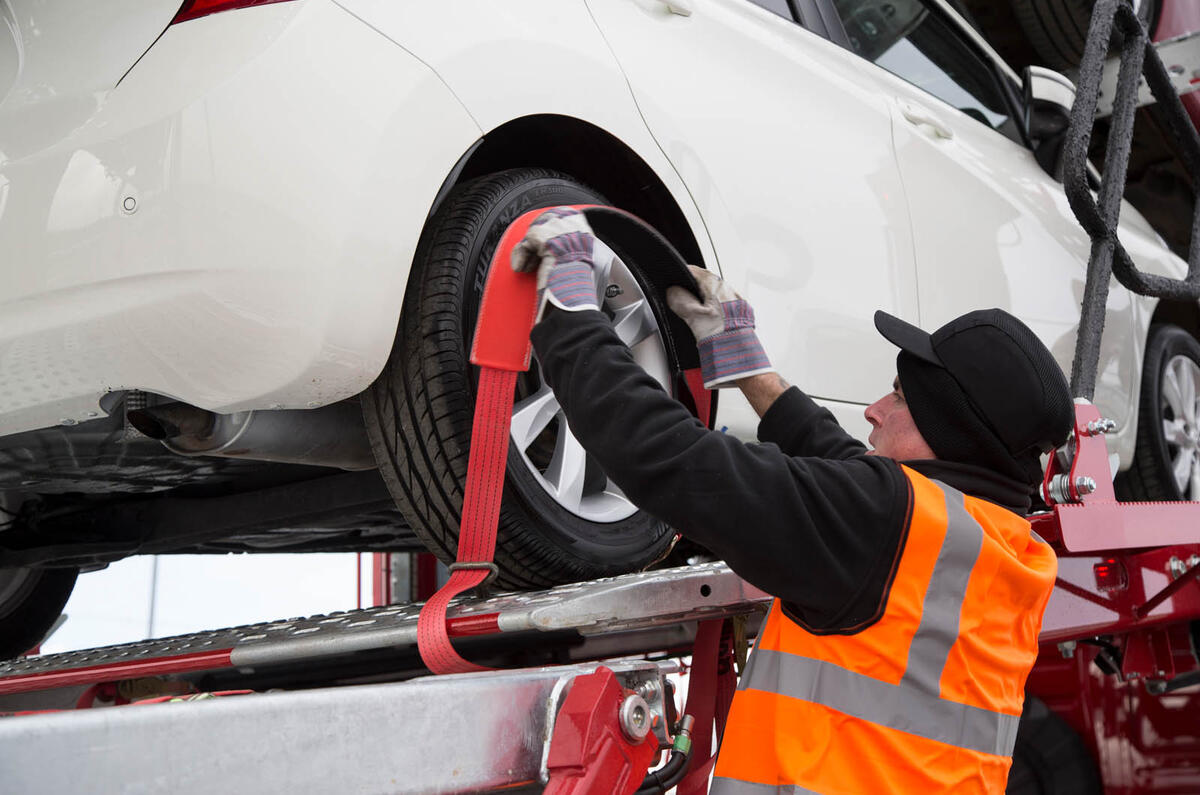
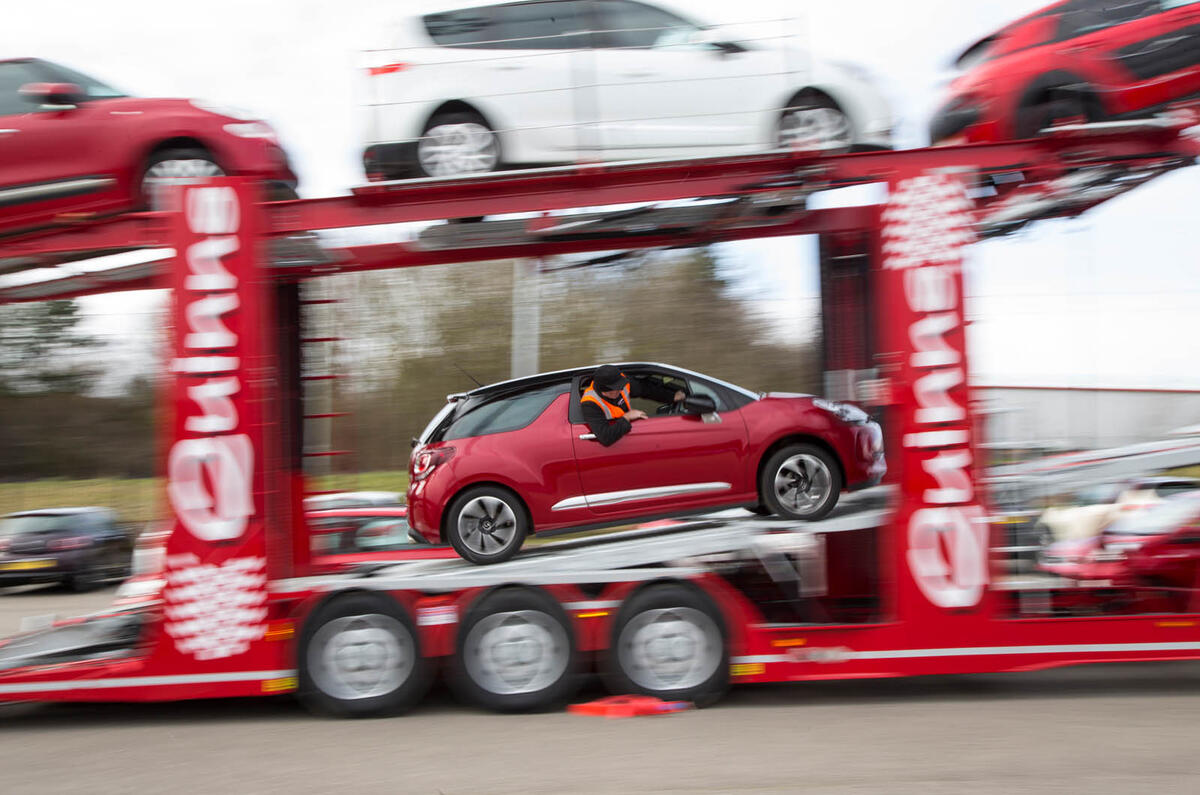
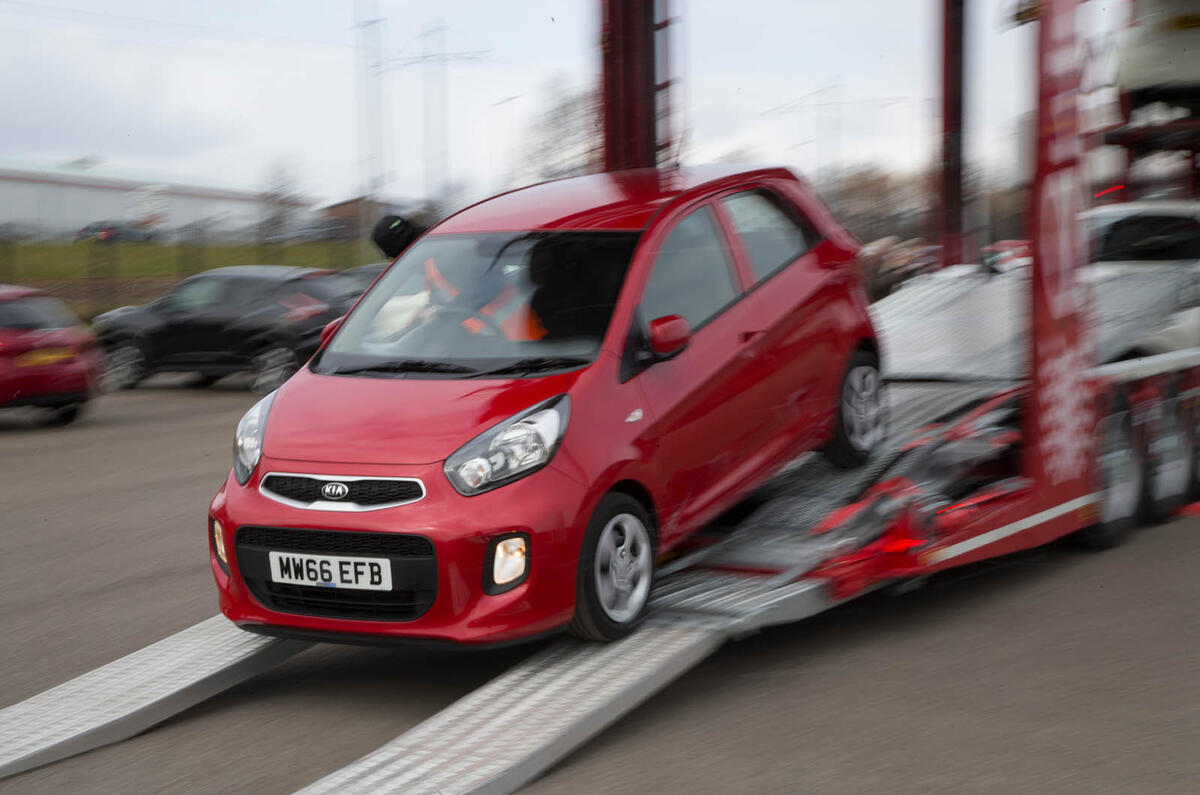
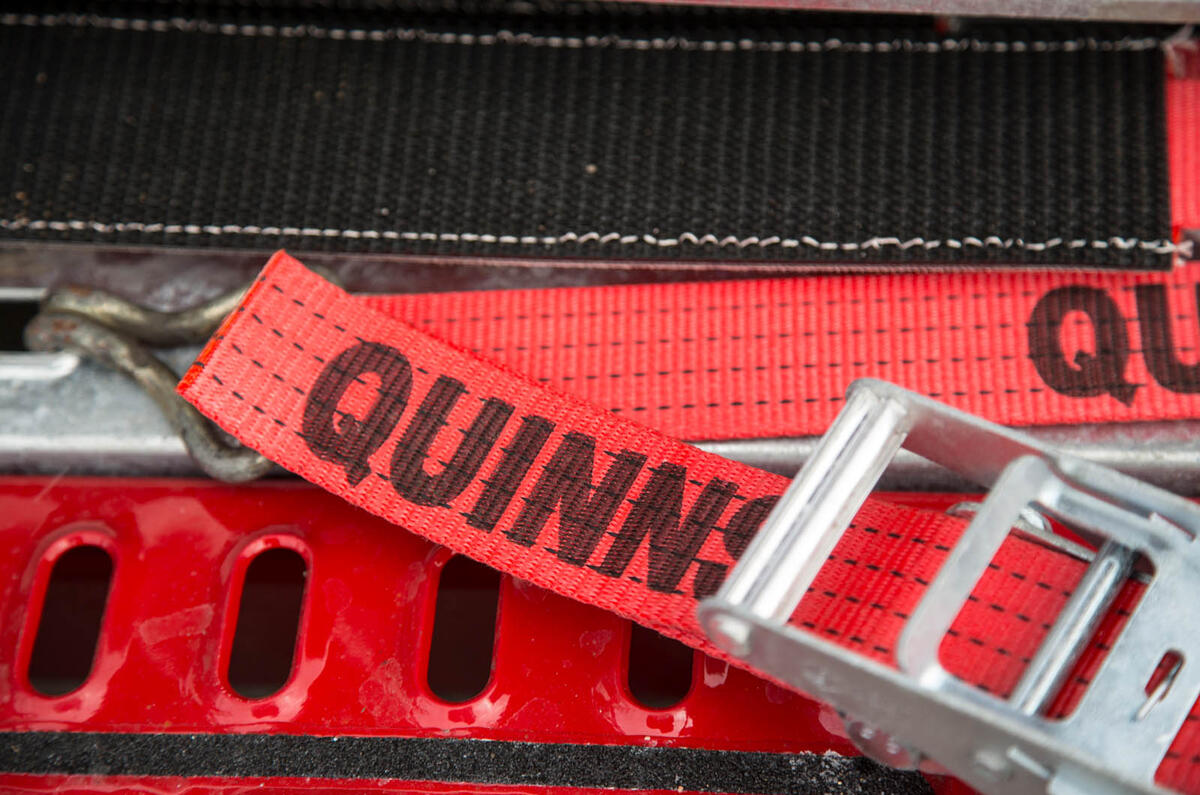

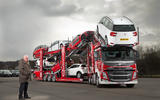
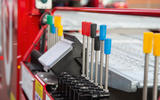
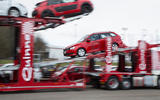

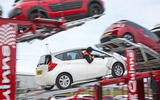


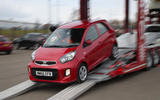
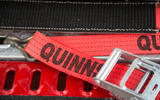
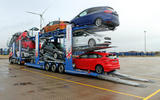


Join the debate
Add your comment
I worked for a car dealership
I worked for a car dealership many years ago. The transporter driver ignored instructions and drove under a low bridge, decapitating the brand new customer car on top. Needless to say, my boss was furious.
More usually, I remember having to check each car as it came off the transporter for damage. Once we had signed for the cars, any problems were the dealer’s reponsibility.
I used to work at Measham
I used to work at Measham auctions, decades ago, and watched some clowns loading a Mini onto a flatbed using some sturdy wooden joists. It was damp and the car kept losing traction so they decided to take a run at it. Awesome. The car hit the ramp and kept going almost horizontally until the joists decided they'd had enough and sprung back into shape, catapulting the Mini up into the air. It landed neatly on its side with the timbers placed neatly alongside it. Happy days.
RIP British lorries ...
... at least the transporter section is UK made.